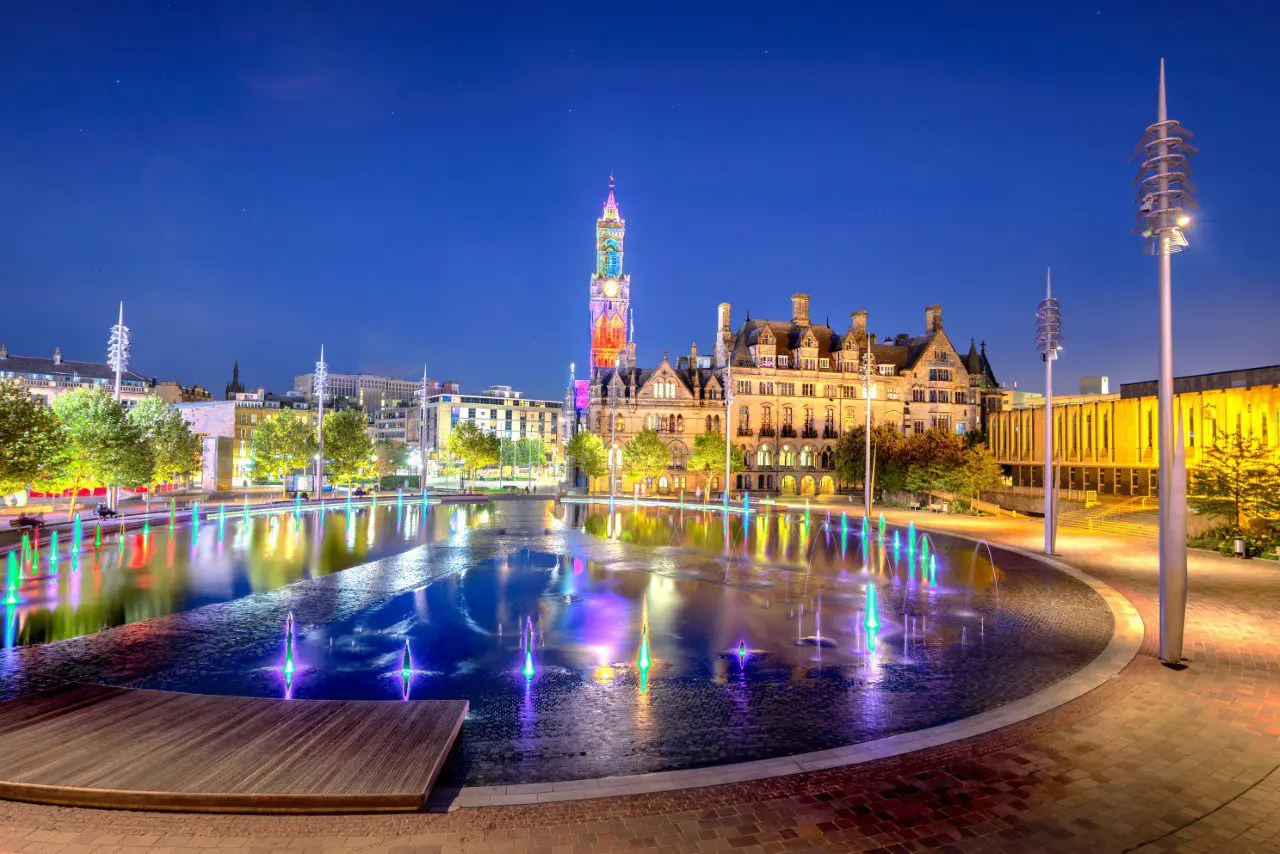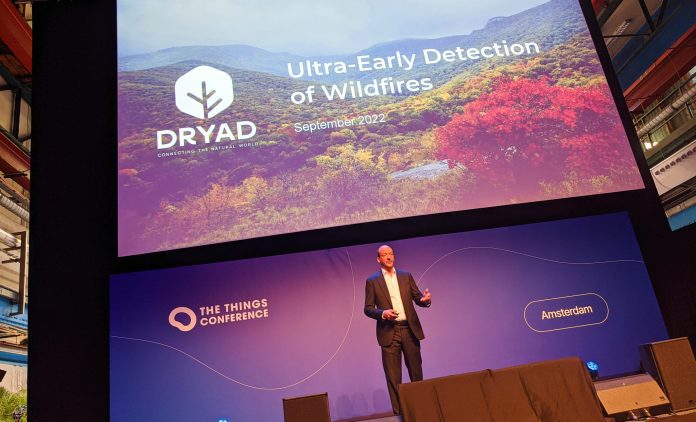The Things People – those in charge of the The Things Network (TTN) and The Things Industries (TTI) – took the magnanimous (though correct, given its place in the back-end IoT stack) step at its annual LoRaWAN developer event in Amsterdam, The Things Conference, to share the opening address with supplier-customers, sometimes lost as individuals in the collective IoT narrative. But these firms – mostly suppliers, occasionally users-turned-suppliers – have the IoT script in their hands, and are the ones untangling the plot twists as a linear growth story.
As such, early coverage from the Amsterdam show goes to them, and their developing successes. Here are five short case studies – leaving out the TTI subplot about support and community (for another time) – that say that LoRaWAN is grasping for scale, at last, as starts to befit the storied reputation of massive IoT. Here goes, as cherry-picked for the stage by TTN/TTI; covering lighting in cities, air quality in buildings, fire detection in forests, leaks in water pipes – and, just maybe, in future, a whole bunch of other applications on top.
1 | Smart lighting / Lucy Zodion
UK-based Lucy Zodion uses LoRaWAN as the connectivity system in smart street lighting, and flagged a couple of major deployments in its home country, including 60,000 connected luminaires in the city of Bradford, in Yorkshire, and an expansive smart city project in St Ives, in Cornwall. A quick web search shows the firm has also recently deployed 17,000 (“and counting”) LoRaWAN smart-lighting sensors in Aberdeen, in Scotland.

These are a snapshot, of course; the firm has been going for 60 years, in one form or another, and been engaged for a decade at least with municipal lighting, focusing on proprietary 868 MHz solutions until switching to LoRaWAN solutions about five years ago. It claims to be responsible for “products” in 90 percent of the UK’s streetlights, in all. On stage in Amsterdam, it talked of the “openness” of LoRaWAN – plus, as per the general messaging at the show, the simplicity and speed to deploy and manage LoRaWAN solutions.
“Our focus is saving energy with clever tech, and LoRaWAN is what we use most at the moment” said Richard Perry, head of business development for smart cities and connected products at the firm. The business case / logic for LoRaWAN lighting is the same as with any remote controlled LED lights, where the energy savings from the LED upgrade bankroll the initial investment case for the connected management system.
Perry said cities are saving 70-80 percent on energy costs with connected LED lights compared with five years ago; the savings are max-ed out with LoRaWAN-style controls, for dimming and trimming and enabling other orchestration techniques. Its deployment in St Ives, only really mentioned in passing in Amsterdam, expands the general efficiency savings into other city departments. “St Ives wanted to broaden its approach to water pumps and meters, and for other applications for the tourist industry,” said Perry (more or less; transcribed back from rough shorthand).
There were some numbers attached to the St Ives project; 500 or 500,000 LoRaWAN gateways, and thousands or hundreds of thousands of LoRaWAN nodes (?). Note: these numbers will be put right, as they are confirmed. The lighting-as-a-platform project in St Ives will expand to agricultural use cases, too, the city hopes – said Perry.
2 | Fire detection / Dryad Networks
 Germany-based Dryad Networks is, by our reckoning, the current super star on the LoRaWAN conference circuit; it gave an under-reported (our bad) presentation at LoRaWAN World Expo in Paris some months back, and has a couple of slots here in Amsterdam – plus its application is a no-brainer, if ever there was one, with decent developing pickup, and genuine planet-saving value. There were no volume numbers attached to its initial speaking spot, as part of a greatest hits package in the opening keynote in Amsterdam, but the most important stats were loud and clear.
Germany-based Dryad Networks is, by our reckoning, the current super star on the LoRaWAN conference circuit; it gave an under-reported (our bad) presentation at LoRaWAN World Expo in Paris some months back, and has a couple of slots here in Amsterdam – plus its application is a no-brainer, if ever there was one, with decent developing pickup, and genuine planet-saving value. There were no volume numbers attached to its initial speaking spot, as part of a greatest hits package in the opening keynote in Amsterdam, but the most important stats were loud and clear.
Wildfires chuck 7.8 tonnes of CO2 into the atmosphere each year, said Carsten Brinkschulte, chief executive at Dryad Networks. Which is equivalent to 20 percent of total global CO2 emissions. Which does not get said enough; for all the IoT applications geared towards sustainability, a smart solution to tackle wildfires represents a eureka moment. Put another way, said Brinkschulte, cutting 20 percent of global emissions is like taking every car on the planet off the road (and grounding every plane and ship, too).
Plus, it provides a means to protect global tree-cover – as nature’s own last-ditch environmental purifier. Dryad Networks takes its name from the the dryad tree spirits of Greek mythology; its solution uses a LoRaWAN mesh system to create a low-power wide-area (LPWA) IoT network going device-to-device under the tree canopy, enabling “large-scale country or continent-wide network deployments”, it reckons.
Its solar-powered sensors run a machine learning algorithm to counter false positives and use GPS tracking to “within 50 metres”; alerts are issued to the firm’s control centre, and relayed to local fire and forest services to tackle fires before they get out of hand.
3 | Air quality / Assek Technologie
Canada-based Assek Technologie made a brief appearance during the opening keynote at The Things Conference, too, and flagged its recently-announced work with Chinese IoT provider Milesight to deploy 47,000 LoRaWAN indoor air quality sensors in public schools in Québec. The regional government wanted to monitor the air quality of all the classrooms in the province, it told the event. The project is also a tester, it said, for the government to “help the government invest in the right infrastructure for the next decade”, to cover outdoor environmental metrics as well.
The newly-deployed sensors – “easy to deploy thanks to LoRaWAN and TTI, in a couple of minutes” (and a couple of hours, it reckons, for “hundreds of sensors with a few gateways”) – in the Québec classrooms measure CO2 concentrations, relative humidity, and temperature, and provide “actionable” data so they are well ventilated for students and teachers. The combined solution in Québec uses hardware from Milesight and software from Assek Technologie, and took close involvement from Semtech, too.
A couple of pilots, in both “modern and historic” schools, have quickly expanded over the course of the last 12 months to cover every school in the province; there is a work stream, as well, to expand the new LoRaWAN infrastructure to connect HVAC systems, also. A press statement declares that the project is “one of the first LoRaWAN mass deployment in Canada [and] will be an inspiring example for education systems within North America and worldwide.”
4 | Water meters / Connexin
 Connexin is another UK business, with another UK business case. (UK providers were out in force at The Things Conference.) It presented briefly in the opening keynote – and more fully later on in the conference schedule – about a project with Severn Trent Water to provide a LoRaWWAN network to work with Itron-made meters, to allow the utility to go from twice-yearly drive-by reads to always-connected infrastructure, sending measures multiple times per day. The project has expanded to connect 150,000 water meters in Coventry, in the West Midlands.
Connexin is another UK business, with another UK business case. (UK providers were out in force at The Things Conference.) It presented briefly in the opening keynote – and more fully later on in the conference schedule – about a project with Severn Trent Water to provide a LoRaWWAN network to work with Itron-made meters, to allow the utility to go from twice-yearly drive-by reads to always-connected infrastructure, sending measures multiple times per day. The project has expanded to connect 150,000 water meters in Coventry, in the West Midlands.
Not just for meter readouts, either; the brief is to stop the leaks. “The UK is surrounded by water, but the wrong kind… [Potable water] is a scarce commodity. One trillion litres of water are lost through leaky pipes each year. Which is the same as 400,000 olympic-sized swimming pools. Or twice the water in Sydney harbour. So it is critical that water companies understand what’s leaking, and where – to reduce wastage.” So said Connexin in Amsterdam, making the case clear, and referencing also the cost-of-living crisis as a reason for accurate, automated billing.
Speaking in a separate session, Dan Preece, vice president of IoT at Connexin, said: “[This] is the first large-scale water utility deployment, and it has created a ripple effect across all water utilities in the UK. Contracts are going out, and we are winning more and more on the back of this solution. Prior to these meters being installed, it was like driving a car without a speedo. The utility can now see leaks and flow patterns, and take action.” Average annual leakage in the UK is 140 litres per person; in Coventry, it has already fallen to 115 litres. The implication is it will fall further.
5 | Air quality / Morgan Sindall
British construction and regeneration group Morgan Sindall has its own IoT platform startup, called GoldenI (further stylised goldeni), which is being used to manage LoRaWAN sensors to monitor the built environment (with a stated focus on “the health, safety, sustainability” for those managing, working, and living there). It is using the GoldenI platform, it says, to manage 120,000 commercial properties and construction sites in the UK.
The system is device agnostic; Morgan Sindall is not interested in contracting original kit makers (OEMs) in China to develop and manage its own hardware portfolio. “One of the things that was important was to have this agnostic platform – to deploy the right sensor for the right use case,” it told the Amsterdam event. The LoRaWAN sensors it is already managing in the platform are for air quality sensing, invariably, plus for other environmental metrics. Logic says the project will be expanded to further smart building controls.

